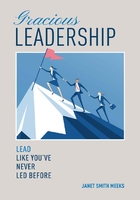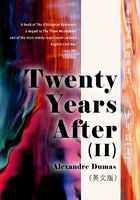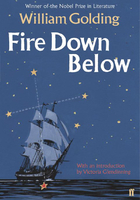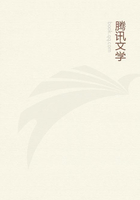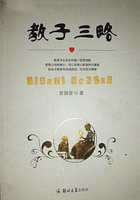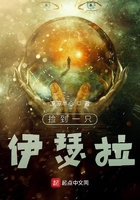The World's Mine Oyster
FALSTAFF: I will not lend thee a penny…
PISTOL: Why then, the world's mine oyster, which I with sword will open.
William Shakespeare,
The Merry Wives of Windsor (1602)
To be fully ourselves it is…in the direction of convergence with all the rest…that we must advance-towards the "other." The peak of ourselves, the acme of our originality, is not our individuality but our person; and according to the evolutionary structure of the world, we can only find our person by uniting together. There is no mind without synthesis.
Pierre Teilhard de Chardin,
The Phenomenon of Man (1955)
The new electronic interdependence recreates the world in the image of a global village.
Marshall McLuhan,
The Gutenberg Galaxy (1962)
We have become too used to globalization. In fact it has become a cliché in the public mind, even while analysts and historians try to explain it. Is it new, or is it old-perhaps as old as the human species? Is it the conscious design of some self-appointed global elite? Or a Frankenstein monster gone out of control? Is it cultural cross-fertilization, or a global dumbing down? Does it lead to growing understanding and respect, or to growing tension and conflict? Above all, is it progress or not, and should it-can it-be stopped or not?
The new millennium started out in a flush of confidence in an increasingly globalized world. In 2005 a book was published that immediately caught the mood of the new century. The World Is Flat:-A Brief History of the Globalized World in the Twenty-first Century was written by the three-times winner of the Pulitzer Prize and columnist in the New York Times Thomas Friedman. From the start it was a runaway best seller. Within two years it had sold over 2 million copies. An expert on international affairs and economics, Friedman used the book to extol the triumph of free-market capitalism over the state-controlled communist economic model. His basic thesis was that the contemporary explosion of advanced technologies and the consequent connecting of knowledge and resources all over the world meant that we are all potentially equal competitors with each other.
The book was a journalistic tour de force. At its heart was a ten-point list of "flatteners" that had changed the world. They included great events such as the fall of the Berlin Wall on 9 November 1989, technological innovations such as the launch of the first web browser in 1995, and the burgeoning new trends of open-sourcing, outsourcing, in-sourcing and supply-chaining that took place throughout the 1990s. "Turbo-charged" by the emergence of a true web-enabled global playing field, massive new strides in international commercial collaboration and the sudden arrival in the marketplace of 3 billion new competitors from China, India, Russia, Eastern Europe and Central Asia, these flatteners, Friedman argued, had brought the world to a "tipping point" at which change had become exponential and irreversible.
On that foundation, Friedman built his argument. As he considered the differing abilities of various countries to adapt and prosper in the "flat" world, he developed a view that a crucial factor in allowing the spread of ideas and best practices around the world was the ability of a culture to absorb foreign ideas and influences. The more absorbent a culture, he said, the greater its advantage in a flat world. His examples of highly absorbent cultures were India, America, Japan and, lately, China. He also included some Muslim countries, such as Turkey, Indonesia and Malaysia, but by contrast he argued that some others, such as the majority of Arab societies, had found it difficult to benefit from the advantages of a flat world. Friedman's suggestion was that, as power was diffused and distinctiveness became harder to sustain, Homo economicus was becoming more and more alike everywhere.
And not just more alike. One of Friedman's most widely discussed ideas was that nations would also become more peaceful. He encapsulated this in his "Dell Theory of Conflict Prevention." The "Dell" part of it was happenstance: he was using a Dell computer to write the book. Knowing that it was a machine of many parts that could not have existed at the price he paid for it without extensive outsourcing, it occurred to him to find out where it had come from. He obtained the entire supply chain from Dell's head office. As he gradually discovered where every single building block of the assemblage came from-the microprocessor from the Philippines, Costa Rica, Malaysia or China; the memory from Korea, Taiwan, Germany or Japan; and so forth-he pieced together an extraordinary picture. The pattern that emerged was a huge multinational logistical and communications web. Friedman was keen to update his previous "Golden Arches Theory of Conflict Prevention," which had stipulated that when a country reaches the level of economic development where it has a middle class big enough to support a network of McDonald's, it becomes a McDonald's country, and people in McDonald's countries don't choose to fight wars any more. (They prefer to wait in line for burgers.) The Dell theory went further by saying that the advent of global supply chains was an even greater restraint on geopolitical aggression. It held that:
No two countries that are both part of a major global supply chain, like Dell's, will ever fight a war against each other as long as they are both part of the same global supply chain. Because people embedded in major global supply chains don't want to fight old-time wars anymore. They want to make just-in-time deliveries of goods and services-and enjoy the rising standards of living that come with that.
Friedman's image caught the mood of the age. The idea that multinational corporations could actually help bring world peace was too good to disbelieve.
However, late in the first decade of the twenty-first century, after the onset of major global economic upheaval, we already feel older and wiser, less inclined to see the earth as "flat" or the opportunities as so limitless and widespread.
First, it is now clear that the competitive and wealth-creating opportunities that Friedman enthuses about are still relevant mainly to small, urban, educated elites. Richard Florida, professor of public policy at George Mason University in Virginia, has shown in some detail how the international economic landscape is, by almost any measure, far from "flat." When looked at through the lens of economic production, there are relatively few cities that generate innovation, and these are separated by "vast valleys" with almost no connection to the global economy and few immediate prospects of benefiting from it. Drawn in this fashion, the map of the world appears "spiky" rather than flat. Florida argues that the leading city-regions in terms of creativity currently number fewer than ten: London, New York, Paris, Tokyo, Hong Kong, Singapore, Chicago, Los Angeles and San Francisco-clusters of economic creativity that are strongly connected to each other, but only feebly connected to the rest of the world. Even though other cities are probably poised to join this network (Shanghai, for example, is clearly on its way to becoming a world city), it remains responsible for only a small fraction of economic activity or human interaction more generally. Its sheer dominance of world creativity on almost any measure is unlikely to be reduced in the foreseeable future. The world is surely not "flat."
Second, Friedman overestimated the ability to be creative in isolation. There is now a lot of work on innovation that shows how interaction and the proximity of fellow "creatives" are crucial to the rate of innovation. In particular, Nobel economist Robert Lucas has shown how difficult it is for ideas to flow as freely or to be honed as sharply when people are scattered in their homes and workplaces.
Third, there is now enough evidence from studies such as the World Values Survey covering the last two decades of the twentieth century to show that diversity is not in fact declining, as Friedman suggested, and nor are loyalties becoming more global. By contrast, what seems to be happening is that, during the initial industrialization of an economy, cultural values do start to become more homogeneous, driven by shared materialism and an emphasis on economic growth at almost any price. But as soon as countries become "postindustrial" (defined as having the majority of the workforce employed in the service sector-which happened in the US in 1956) the priorities quickly refocus on quality of life, self expression and such issues as environmental protection. This often goes with an actual renaissance of cultural diversity and regional loyalty-sometimes even seeming to generate more awareness of diversity than ever existed before.
Fourth, the "Dell theory" doesn't bear the weight that Friedman put on it. Many have pointed out that the historical evidence is against it. US companies invested hugely in Germany before the First World War. Likewise, between the wars, there was a rash of specialized banks and law firms that focused on opening the German market to US capital, and none of this prevented the Second World War. And we shouldn't forget the potential darker side of commercial interconnectedness. Terrorist networks may well use it for the purpose of destruction, not profit. In the world of the Web, the transmission of terror and the expansion of criminality also become easier.
In fact, the antecedents of the notion that trade and investment can prevent conflict go back some way, and when looked at more thoroughly they provide serious cause for doubt. One long and detailed examination of the subject was by the economist Karl Polanyi. In 1944 Polanyi published The Great Transformation, the book for which he is chiefly remembered. In this he focused on the breakdown of the "one hundred years of peace"-the century of harmony that began from the time of the Battle of Waterloo and which saw the Industrial Revolution gain momentum in Europe, the US and then Japan. The latter decades of the nineteenth century saw unprecedented growth in world trade and in overseas investment from Europe into Asia and the New World. It was widely believed that progress was unstoppable and that there were too many vested interests in globalization for war to be rational any longer. In fact, of course, the balance of power in Europe (and in Asia as Japan's economic and military might increased and its regional aspirations became more marked) was precarious, and the competition for empire was becoming more aggressive. But there was nevertheless a prevailing optimism about the power of progress and the international market to secure the peace.
Today it is hard to imagine just how secure that peace felt at the time. Had we been living in the first decade of the twentieth century we might have read an article in the 1913 edition of the New York Times without any disbelief or cynicism. The headline trumpets confidently, "INVITE ALL NATIONS TO THE PEACE PARTY." The story beneath talks about an international celebration to mark the centenary of the Treaty of Ghent, which had originally been signed on Christmas Eve 1814, to end the War of 1812 between the US and Great Britain. This celebration, said the organizers, would make clear that "the time has come when international rivalries and differences, though numerous and severe, may be settled without the carnage and horrors of war." All the great powers were to be present, and expensive solemnization plans were on the table. But by the summer of 1914, not surprisingly, the "peace party" was forgotten.
The task Polanyi set himself was to explain the political and economic origins of the collapse of this peace and of the great transformation that he had lived through in the twentieth century. (He knew what he was talking about, for he had experienced the First World War as a serving officer in the Austro-Hungarian army.) As he saw it, four institutions were crucial to the economic and political peace that had characterized the nineteenth century: a balance of political power, the international gold standard, the liberal state and a self-regulating market system. Of these, he believed the self-regulating market was "the fount and matrix of the system," and the "innovation which gave rise to a specific civilization." However, one of his main conclusions was that the market does not in fact guarantee peace and stability alongside prosperity. Polanyi argued that self-regulated markets, in whatever context they may occur, give rise to a spontaneous countermovement, even among those enjoying increased material prosperity; they contain the inevitable seeds of conflict and breakdown within them, because the market will always try, as he put it, to dominate social structures. As a result, there will sooner or later be dislocation and a massive counterreaction.
This was profound and prescient, as we shall see later. Viewed from the perspective of the early twenty-first century, there is no reason to believe this analysis is outmoded. For we are now living through just such a period of massive dislocation, brought on precisely because-in Polanyi's terms-the market has tried to dominate social structures.
Lucid and provocative, Friedman initially seemed to many to have captured the essence of the economic possibilities of the twenty-first century. His book was published, in 2005, on the crest of a wave of optimism. It was a wave that even then was about to break. Perhaps influenced by some of the criticism that depicted him as a cheerleader for corporate capitalism, blind to the conflict and greed that can always be found in capitalism's closet, Friedman subsequently darkened his outlook. In September 2008 he followed up The World Is Flat with another book, Hot, Flat and Crowded: Why We Need a Green Revolution and How It Can Renew America. In this he argued that the economic future was shifting from information technology to renewable environmental technology, that the "Cold War Era" was morphing into the "Energy-Climate Era," and that the world would shortly be dominated by the problems of growing demand for scarcer supplies, massive transfer of wealth to oil-producing countries, disruptive climate change, an increasing wealth gap and an accelerating loss of biodiversity. He warned of an approaching turning point in around 2050 beyond which it would be impossible for humanity to reverse the harmful effects of climate change, and mournfully pondered America's loss of focus and national purpose.
As time has gone by, Friedman's thesis that the world is "flat" has come to seem simplistic and superficial. However, there is another vision of globalization that is more subtle, more perceptive, and which perhaps begins to get us closer to some kind of answer to the question from the last chapter about beginnings and endings.
The Phenomenon of Man by paleontologist, philosopher and Jesuit priest, Pierre Teilhard de Chardin was published post-humously in 1955, fifty years before The World Is Flat. The Phenomenon of Man is not an easy book. During his lifetime, Teilhard's Roman Catholic authorities banned its publication because of what seemed to be its questionable and ambiguous ideas. It also infuriated rationalists, who regarded it as pseudo-scientific mumbo jumbo. Teilhard himself admitted that many would finish the book unable to decide whether he had been "leading them through facts, through metaphysics or through dreams." And yet it stands the test of time as a strangely more prescient and compelling vision of globalization than Friedman's.
In The Phenomenon of Man, Teilhard fuses scientific understanding and visionary imagery to lay out the steps of a theory of human evolution. As he was a paleontologist, it is no surprise that he starts much further back than Friedman-his first chapters are about the evolution of matter. Key to all his thinking is the image of the world as a sphere, not just literally but metaphorically. He sees the evolutionary ascent of human beings as happening in two stages. In the first stage, humanity expands around the globe, gradually covering the sphere with its presence until it meets up with itself and begins to know itself more fully. By the twentieth century, with most of the habitable earth populated, the second stage begins. A kind of tapestry of ideas weaves itself around the earth, and a collective memory is developed. Human mental activity overlaps, interconnects, converges and begins to unify. A complex membrane of thought, fuelled by human consciousness, seems to envelop the globe. He describes the process as "a gigantic psychobiological operation, a sort of mega-synthesis, the 'super-arrangement' to which all the thinking elements of the earth find themselves today individually and collectively subject." And he compares this "super-arrangement" to "some great body which is being born-with its limbs, its nervous system, its perceptive organs, its memory-the body in fact of that great living Thing which has to come to fulfil the ambitions aroused in the reflective being by the newly acquired consciousness."
To distinguish it from the stage of evolution that produced the biosphere, Teilhard called this stage of evolution, this collective network of mind, the "noosphere" (from the Greek nous, meaning "mind"). Others since have seen in this image a prefiguring of the vast electronic web of the internet, encircling the earth and connecting humanity from its remotest corners, creating one living sheath of continuous communication and thought-"A Globe, Clothing Itself With a Brain," as an excited headline in the June 1995 edition of Wired magazine put it. But this is to trivialize his vision of human evolution, which foresees a profound change in human consciousness and in our understanding of the nature of being.
Teilhard predicted that, as people became more self-aware, evolution would speed up. He envisioned a planet whose material evolution was slowing down at the same time as an exponential growth took place in the sharing and refinement of ideas that would eventually free humanity from the individualism intrinsic to physicality. A new type of conscious existence would come into being, which he called the "Omega Point." He is at pains to stress that at the heart of Omega is a "secret complicity between the infinite and the infinitesimal"-a convergence of the individual and the universal. He believed that, to be truly itself, humanity must advance in the direction of convergence rather than "drag the world backwards" by fighting for individuality and singularity. The peak of evolution was not individuality but person. And to be fully a person could only mean leaving conscious and assertive individuality behind: "according to the evolutionary structure of the world we can only find our person by uniting together."
In his hypothesis of humanity ascending from matter to spirit and from separateness to union, Teilhard is certainly mystical and optimistic; yet he is not naive. He does not ignore the dark side: "As things are now going it will not be long before we run full tilt into one another. Something will explode if we persist in trying to squeeze into our old tumble-down huts the material and spiritual forces that are henceforward on the scale of the world."
In the conclusion of The Phenomenon of Man he confronts two possibilities about the maturing of the humanized world. One possibility is that evil is reduced to a minimum and what he calls "the final convergence" will take place in peace. But there is also another possibility, in which "Obeying a law from which nothing in the past has ever been exempt, evil may go on growing alongside good, and it too may attain its paroxysm at the end in some specifically new form."
Teilhard's thought-world is not easy to enter. His vision of human development can easily seem nebulous. But I believe he has glimpsed something which few others have sensed so perceptively. He has seen that globalization is about something far deeper than economics, commerce and politics. It is an evolution of the human spirit. And, on this view, the end of globalization remains radically open precisely because of the ambiguities that seem to be intrinsic to the human spirit as it evolves.
Can we, or should we, interpret Teilhard's sense that evil may go on growing alongside the good in terms of a "clash of civilizations" as foreseen by another influential contemporary voice, the political scientist Samuel P. Huntington? In his The Clash of Civilizations and the Remaking of World Order, published in 1996, he wrote that "the fundamental source of conflict in this new world will not be primarily ideological or primarily economic. The great divisions among humankind and the dominating source of conflict will be cultural…The clash of civilizations will dominate global politics. The fault lines between civilizations will be the battle lines of the future."
Huntington divided the world into predominantly cultural or religious groupings. There were, he said, eight civilizations that qualified as "major": Western, Orthodox, Latin American, Hindu, Muslim, Sinic (China, Korea and Vietnam), Japanese, and the civilization of sub-Saharan Africa. Clashes, when they came, would arrive in two forms, he said: "fault-line" conflicts and "core-state" conflicts. Fault-line conflicts happen between adjacent states that belong to different civilizations. Core-state conflicts happen between the major states of different civilizations. Fault-line conflicts often foreshadow core-state conflicts.
The thesis clearly has some force. In a European context, for example, the fault line that runs through the Balkans is a very ancient one; the disintegration of Yugoslavia since 1991 certainly looked like a (three-way) clash of civilizations (Western, Orthodox and Muslim). And, more generally, some of the most terrible experiences of the last century were motivated at least in part by a desire by the aggressors to assert their civilization's superiority (Japan's invasion of China in 1937, Nazi Germany's invasion of Russia in 1941).
But it is hard to see in the clash of civilizations the dominant theme of human contention in history. More basic causes of political and military aggression-such as competition for land, water and energy-underlie most past conflicts; and indeed these threaten to become more important as causes of instability in the future. Huntington's categorization of people along broadly cultural and/or religious lines is surely far too one-dimensional.
In fact changing patterns of self-definition are one of the most striking features of the present day. How many people today define themselves by membership in just one group or category? People's identities are not only complex, but becoming more so. To take just one person's experience: even in purely geographical terms, my own identity is multilayered. As a child, I grew up in a British seaside town and its surroundings (Brighton and the South Downs). The sea and the Sussex countryside will always be part of me; they are part of my beginnings, and at the end I would like my ashes to be scattered on the Sussex Downs. But there is another layer of my identity, too: I am European. My home is a continent that is not just a geographical entity (of which the British Isles are a part, even if many on those islands prefer to think otherwise) but a cultural tradition and a shared history. And then-in between the very local and the continental-I am something else that, in a manner symptomatic of a particular British problem, I find a little hard to define. (Am I English or British?) I also know that my identity needs to be open to the wider world if it is not to become ingrown and sterile: as Kipling put it, for people, and not just for the English, "What should they know of England who only England know?"
The Indian Nobel Prize–winning economist Amartya Sen generalizes this point in his 2006 book Identity and Violence: The Illusion of Destiny. Sen was born in West Bengal, and became the first Asian academic to be master of an Oxbridge college before he moved to Harvard. He personifies many overlapping identities, and many loyalties. His book is surely much nearer the truth about the complexity of the human spirit than is The Clash of Civilizations. Sen points out that people can be grouped in multiple ways, each of which may involve deep ties and powerful meaning for the individual: nationality, location, class, occupation, social status, language, politics, among others. He argues that religious or cultural categories, despite their frequent prominence in public discourse, do not negate other categories of belonging, nor can they be seen as the only relevant classification system. In fact the reductionist view that a human being can be adequately labelled by religion or culture not only encourages "clashing," but prevents genuine attempts at dialogue. A failure to see the many overlapping identities of humanity limits discussion to the areas of disagreement. Sen argues that Western attempts to promote ties with the Muslim world can too often seem like a pair of friends who have many things in common but only want to talk about the one area where they deeply disagree. He calls for greater recognition of the full range of links that have woven people together across divides of religion and nationality over the centuries, including the arts, literature, science, mathematics, sport and trade:
People see themselves-and have reason to see themselves-in many different ways. For example, a Bangladeshi Muslim is not only a Muslim but also a Bengali and a Bangladeshi, typically quite proud of the Bengali language, literature, and music, not to mention the other identities he or she may have connected with class, gender, occupation, politics, aesthetic taste, and so on. Bangladesh's separation from Pakistan was not based on religion at all, since a Muslim identity was shared by the bulk of the population in the two wings of undivided Pakistan. The separatist issues related to language, literature, and politics.
Cultural interchange can bridge many differences-as anyone who in 2006 saw the creation of an image of the Hindu goddess Durga in London's British Museum will attest. In the Great Court of a quintessentially British institution, Bengali craftsmen brought straw, barley, oats, clay, wood and water from the Ganges to create a statue of the goddess. Hundreds of Westerners joined West Bengali Hindus and Bangladeshi Muslims during the five days of puja and the final immersion of the goddess in the Thames.
As time goes by, the Internet is spinning the threads of culture and commerce into the farthest corners of the world, and those threads are stitching and cross-stitching people and communities to each other. How much more difficult will it be to conceive of the world as a small number of hostile camps, assembled under purely religious or cultural banners? As we nurture in ourselves wider global affiliations, we will surely find we share concerns, interests and ideas with people dotted all over the world; and only as we do that will we begin to find that we truly know our own home, our own beginning.
*
Where, then, is the world heading? Are we heading for a "flat" world, in which globalization slowly erases the differences between us? Or are we heading for a "clashing" world of mighty civilizations teetering perilously on the edge of mutual enmity? Neither. Both models are too simplistic. We get nearer to an answer in the complex imagery of Teilhard: we are a world where the globalization of the human presence continues and accelerates, but without reducing individuality. In fact we are becoming more distinct and individual, as opposed to communitarian, even as we become ever more irreversibly part of the fabric of global humanity. As we have seen, there is a tension in this paradox, which Teilhard's vision does not and cannot conclusively or unambiguously resolve.
What then is globalization? Much of the economic literature and public comment of today is based on the notion that globalization is somehow a concept or an ideology that is the result of conscious decisions. On this reading, globalization is something alien, something that is imposed by governments, or by multinational corporations, or perhaps by Western civilization on the rest of the world.
But, at its most fundamental, the truth is that globalization is not a concept or an ideology: it is a phenomenon. It is part of the sweep of human history. To treat it as something that is being steered by anyone, or any group of people or any group of countries, is to misunderstand what is really happening. Globalization is quite different from the various "isms" of the last hundred years-communism, fascism, liberalism, etc. They really are ideas, and at various times they have had intellectual champions who have sought to make them an accepted basis of political life and government. By contrast, globalization is like population growth. It is a phenomenon that we live with, and that has accelerated very sharply in the past few decades. Governments can-and have-at various times helped or hindered its progress, notably through war and through their policies on trade and capital flows. But, at root, globalization is a phenomenon produced by the human spirit.
The vital point about globalization today is that it has passed the point of no return. We can't pause it, let alone reverse it. This has not always been the case. It wasn't too long ago in the history of humankind that progress could be more or less stopped in its tracks. During the Dark Ages from about AD 500 to AD 700 in western Europe, there was extensive decay. Apart from the scholarship and art that was incubated and preserved in a handful of monasteries, cultural and technological development ground to a halt. Under Roman government, western Europe had experienced stable conditions for trade and manufacture, and a unified cultural and educational system of far-ranging connections. The subsequent steady deterioration of commercial and social linkages and infrastructure resulted in communities becoming increasingly isolated. There was a steep decline in trade and manufacture for export. Major industries, such as pottery, vanished. The crafts of brick-making and cement-making were lost. Building practically ceased. Administrative and military infrastructures disintegrated and schools collapsed, leading to illiteracy even among the leadership. The number of books plummeted. Organized farming of the land largely vanished, and agricultural yields declined to subsistence level. Meanwhile, of course, the Eastern Empire, with its capital at Constantinople, continued to flourish. And the Middle East saw the rise of Islam-from inconspicuous beginnings in the Arabian Peninsula-to become a major new civilization which was on its way to becoming the principal centre of learning of the Mediterranean world. The world was still sufficiently unglobalized for one region to be effectively closed down while others flourished.
Later on, in the fifteenth century, Ming China also saw a disengagement from the wider world-for different reasons-which resulted in increasing relative weaknesses. A steady growth of Chinese culture and trade had reached its apogee in the opening decades of the fifteenth century. The Ming government was leading world exploration and discovery. It had sponsored seven magnificent exploratory expeditions under the command of the great admiral Zheng He. These expeditions were extraordinary examples of naval skill and power. The fleets visited the Indonesian archipelago, Thailand, India, Arabia and East Africa, and possibly (the records were destroyed) reached beyond the Cape of Good Hope. The first fleet is believed to have consisted of 300 nine-masted treasure ships and 28,000 crew. Wherever Zheng He went, he took a great interest in the local culture. He presented gifts of gold, silver, porcelain and silk; and he brought back samples of his discoveries.
But the expense of these voyages-designed mainly to impress other peoples with the magnificence of Imperial China-was huge. Bureaucratic opposition mounted, and when the emperor who had sponsored Zheng He died, in 1424, the mandarins were able to exert a considerable influence over his son. The result was retrenchment; all overseas trade and contact were cut off. The government abandoned the ships of the fleet, and many captains and admirals were stripped of their rank. China closed its doors on the world overseas. All the court records of Zheng He's voyages were burned. Port facilities were shut down, and seafaring activities were banned. The consequences for Chinese civilization were severe: China's intellectual life gradually became ossified, and the country eventually paid a heavy price in the form of the tragic experiences of the nineteenth and twentieth centuries.
Islam, too, had its zenith and subsequent decline. During the ninth and tenth centuries Islam had a golden age. While much of Europe was in the grip of paralysis, disease and civil strife, Islamic scientists were inventing algebra and developing geometry, investigating human psychology (they came up with some of the first treatments of mental disorders), and developing the foundations of modern geography (for instance by accurately calculating the circumference and radius of the earth). But from the start of the eleventh century Islam began to apply the brakes on its intellectual life. From around the twelfth century the Islamic world ceased to lead the way in either science or philosophy. The reasons for this stagnation are still debated by historians. Most agree, however, that three significant factors were (i) the savagery of the Mongol invasion of Baghdad in 1258, which overwhelmed the administrative and intellectual heart of Islam (thirty-six libraries were burned down, and the blood of the dead was said to have run as "high as horses' knees"); (ii) bubonic plague, which hit the Muslim world even harder than Europe, and (iii) the growing religious conservatism of the clerical establishment. For example, the Andalusian polymath Ibn Rushd (known more widely in Europe as Averro?s), a man who spanned Eastern and Western traditions and combined a mastery of Islamic philosophy with authorship of many commentaries on the works of Aristotle, was abruptly banished from the Muslim court in Cordoba at the end of the twelfth century because of his perceived excessive rationalism.
And as the world of Islam lost intellectual momentum, Christian Europe surged forward (nourished in part by the fruits of Muslim scholarship) and expanded its power. Its growing intellectual confidence and creative power have their enduring witness in the art, architecture and literature of the high Middle Ages and the Renaissance: this was the era of Milan Cathedral, Dante, the great Renaissance artists, Gutenberg-and exploration.
For all the obvious differences between Ming China and medieval Islam, there is an uncanny parallel between the responses of the Chinese mandarins and the Muslim clerical establishment to the threat of engagement with the outside world. Are these cultural tides related? Did weakness on the part of these two great civilizations create a gap that Europe filled? Possibly. It is certainly a fact that during the axial centuries of the last two thousand years, the renaissance of Europe was going on broadly at the same time as the closing of the borders in China and the loss of traction in the Islamic world. It is likely that Europe's increasing strength was facilitated, in part at least, by the increasing weakness of both China and Islam, and that this rebalancing of the world's civilizations helped drive Europe to create the foundations of the modern world. Consider the world in 1492. It was the year of the fall of Granada and the final extinction of Muslim Spain, and just a few years after the burning of Zheng He's records in the Chinese imperial court. But it was also the year when Christopher Columbus sailed from Spain to the New World, starting a voyage of discovery that led to the Europeanization of the Americas.
If it takes the closing down of some parts of the global system for another part to dominate, then the like of this will probably never happen again. Barring some huge cataclysm, we are all now in the same torrent of progress, and we are all going to be carried along by it at an increasingly similar pace. We will not see whole civilizations turn in on themselves and wither. It is increasingly impossible to be culturally isolationist. The exceptions today are relatively tiny parts of the world that, for a while, are forced by doctrinaire and fanatical leaderships to be hermetically sealed from progress at the price of immense human suffering. Even in these cases, the enforced darkness may last a generation or two, but eventually release will come. In the Middle Ages the world was not sufficiently interconnected for an intellectual and economic vacuum in one region to be filled from elsewhere. Such a vacuum cannot persist on any significant scale in the twenty-first century. It is not possible for whole regions to remain isolated from the world's accumulated knowledge.
Where, then, will globalization lead us? Over the next fifty years, its main political impact will be to create a more multipolar world. But it will also change societies, urbanizing them and individualizing them. It will bring with it a new burst of cultural interaction and creativity. And commercial connectedness and exchange will become ever more intense.
A more multipolar world is already upon us. This is, in fact, not so much a new chapter in the history of the world as a reversion to the historical norm. Only twice in history has there been a single global superpower. First, the British Empire from 1815 to (arguably) the unification of Germany in 1871. And, second, the US supremacy from the fall of the Berlin Wall in 1989 to…around now.
There was no unipolar period in history before 1815. The Roman Empire and the Chinese Han Empire governed roughly the same number of people (around 60 million). Though they coexisted for some 250 years, they had little if any contact with each other; they never clashed, or recorded each other's triumphs. If only they had. The Romans could have shown off their new discovery, glass, at much the same time as the Chinese could have shown off theirs, porcelain. In many other ways-scientific, literary, architectural-the two civilizations marched in (unconscious) step. However, in many respects, China was well ahead of Europe in technical invention. Chinese scientists developed the first paper, discovered how to forge steel, produced the first seismometer, correctly discovered that the moon was reflecting the light of the sun, and designed the first winnowing machine for farmers. Europe, on the other hand, benefited from alphabetic script-the concept of which was first developed in Mesopotamia in the second millennium BC-which China never adopted. Philosophy, literature and art flourished in both civilizations, and roads (now referred to as the silk routes) were opened up to allow trade across the Eurasian land mass. It was a world that was, at the very least, bipolar.
Nor was the world unipolar at the time of the Mongol Empire, which numbered a massive 110 million people by the thirteenth century. The Mongols had a devastating impact on Islam, and were a major threat to both China and a nascent Russia, but had little impact on the affairs of Western Christendom. Nor did the Spanish Empire represent a unipolar moment. In 1600 it numbered around 60 million people, and seemed to Europeans to dominate the world. But the Ming Empire at the same time numbered around 150 million people, and, sealed from the rest of the world, Ming civilization was scarcely impacted by the Spanish at all.
It was only after the fall of Napoleonic France, in 1815, that Britain, because of its dominance of the sea, became the first country in the history of the world to establish an empire that had no rival and had global reach. It eventually became the biggest empire ever in terms of population (over 500 million). It could afford to go to almost any lengths to remove awkward political customers-as evidenced famously by the 1868 expedition to Abyssinia to rescue two hostages from imprisonment by the Ethiopian emperor Tewodros. The British government considered it an affair of honour, and dispatched General Sir Robert Napier with an army of 13,000 soldiers and a supporting group of 26,000 camp followers, 40,000 animals (including elephants) and 280 ships. After a long, hot journey the final battle took under two hours, the British lost one man, the Ethiopians 700, the hostages were released and the emperor committed suicide.
Politically, there was no other power that could seriously hamper British rule until 1871, when the Prussian chief minister Otto von Bismarck managed to unify a number of independent German states into a nation state and thus create the German Empire. The geopolitical force that thus came into being was a phenomenal success, releasing an immediate wave of patriotism and economic growth. In 1871 there were 41 million citizens in Germany. Thirty years later there were around 60 million. During that same period, German steel production multiplied by twelve, coal production multiplied by five, and exports tripled. By 1914 Germany was the most powerful industrial nation in the world. The years of British supremacy were clearly over.
The second period in which the world has had a clear single global superpower began with the last throes of the Cold War, in 1989. It was widely assumed that the end of the old Soviet/ US bipolar world would usher in a multipolar structure, with power dispersed to new centres such as Japan, Germany and China. It didn't happen. The US became the sole superpower. The American newspaper columnist Charles Krauthammer could confidently declare in a Washington lecture delivered in September 1990, "Now is the unipolar moment. There is today no lack of second-rank powers. Germany and Japan are economic dynamos. Britain and France can deploy diplomatic and to some extent military assets. The Soviet Union possesses several elements of power-military, diplomatic and political-but all are in rapid decline. There is but one first-rate power and no prospect in the immediate future of any power to rival it."
It will have lasted no more than about a generation. In 2004 the National Intelligence Council, the leading US intelligence organization, was predicting "continued US dominance," adding that "most major powers have forsaken the idea of balancing the US." But in 2008 its four-times-yearly global-trends review had a very different story to tell. It concluded that the world was entering an unstable and unpredictable period in which the advance of Western democracy could not be taken for granted and the US would no longer be able to "call the shots" alone. It predicted a decline of EU influence and a sharp rise in the influence of emerging economies such as Brazil, India and China. International relations were reverting to type: a multipolar world was coming into being again.
The reemergence of China as a world power is the most important event of the first half of this century. It will be described by many as the "emergence" of China, but in fact we should not forget that it is a return to a lengthy status quo ante-for eighteen of the past twenty centuries China has been the world's largest economy. The Economist not long ago described it thus: "China was not only the largest economy for much of recorded history, but until the fifteenth century, it also had the highest income per capita-and was the world's technological leader." As recently as 1820, China accounted for one-third of the world's GDP while the US accounted for a mere 2 percent. By 1914 the tables had turned, with the US accounting for 19 percent of global GDP and China, which had been almost completely bypassed by the European Industrial Revolution of the nineteenth century, less than 10 percent. But the pattern is changing again: China is returning to the world stage. Since its own internal free-market reforms, in 1978, China's GDP has grown at an average of around 10 percent a year. Today China is the fastest growing economy in the world, and within twenty years, by many predictions, it will (once again) be the largest.
So a more multipolar world is dawning, and the political currents that will guide it are already flowing. The phenomenon of globalization, however, is not simply a matter of international political relationships. It is also having a profound effect on human society everywhere, whatever the political form of governance-democratic or otherwise. Almost everywhere, people are becoming more urbanized and more individualized. The process is largely driven in the less economically developed countries by lack of resources in rural areas and the (oft-misguided) lure of higher standards of living in the cities. At the last count, in 2008, there were 473 cities in the world with over 1 million inhabitants. The number has nearly doubled in under twenty years. In 1850 there were probably just three: London, Paris and Beijing.
This breathless rate of change has helped dismantle many of the old communitarian and social structures. The causal link between urbanization and individualization is profound and virtually universal, even though the pace and extent of individualization clearly vary among the different cultures of the world. Europeans are probably in the vanguard. In Europe, all sorts of structures that were taken for granted as part of the social fabric half a century ago are in decline. In Britain, for example, churches, working men's associations, Masons, Boy Scouts, the Women's Institute and many other smaller and more local organizations that held society together have shrunk in size and influence, whereas only fifty years ago they were established features of the British social landscape and were taken as much for granted as the daily milk delivery and the sight of the policeman on his bicycle.
The US is very different: though the degree of urbanization is similar (at the turn of the century, three out of four Americans and roughly the same proportion of Europeans lived in urban areas), and both are prosperous, America's patriotism, religiousness and sense of common purpose stand in striking contrast to a Europe that can sometimes-even to Europeans themselves-seem to lack both compass and anchor. The fact is that Europeans have become more secularized than Americans, more children of the eighteenth-century Enlightenment; and this secularization-in a postfascist, postcommunist age-is accompanied by a degree of individualization that impacts almost all aspects of life and more extensively than in any other culture today. It is hard to think of anywhere else in the world with a comparable philosophical outlook-with what is, in some ways, one notable (and perhaps surprising) exception: China.
The distinguishing feature of Chinese civilization is that China is the only society where there has never been a deep-rooted theistic religion at the centre of the culture. It is not that the Chinese weren't religious, but from a very early stage Chinese thought was fundamentally deistic. It has no specific creation story, and revelation, miracles and mysticism generally were shunned. Chinese philosophy was highly attractive to some European Enlightenment scholars. Sir William Temple-seventeenth-century English diplomat, and a fairly typical Enlightenment spokesman-energetically enthused about Confucius, proclaiming at one stage that Confucius's "chief principle" was that everyone ought to "study and endeavour the improving and perfecting of his own natural reason to the greatest height he is capable" and claiming him as an Enlightenment hero.
The comparison can be overdrawn, of course. Chinese culture has a strongly superstitious streak (although this characteristic of popular belief should not be underestimated in secularized Europe either). And it would be a serious mistake to overlook the strength and cohesiveness of Chinese patriotism (in which China resembles America much more than it does Europe). Nevertheless, it is arguable that Europe and China are now the two most secularized civilizations in the world. The Confucian ethos has given China a rationalist pragmatism as a basis for the values of life and a social psychology that is by instinct well attuned to individualized urban existence. (This is not, of course, to argue that crowd psychology and hysteria cannot take over in times of social and political stress-as evidenced in Europe in the 1930s and China in the 1960s. But in both cases these were deviations from an underlying rational pragmatism.)
Is the rest of Asia fundamentally different in the way it is being affected by urbanization and globalization? Certainly not the other Asian giant, India. In 2006 the editor of Newsweek International, Fareed Zakaria, described the explosion of post-globalization economic and cultural energy in India as going far beyond the economic statistics. "Indians, at least in urban areas, are bursting with enthusiasm. Indian businessmen are giddy about their prospects. Indian designers and artists speak of extending their influence across the globe. Bollywood movie stars want to grow their audience abroad from their 'base' of half a billion fans. It is as if hundreds of millions of people have suddenly discovered the keys to unlock their potential."
If there is any lasting Asian exception to the individualizing effects of urbanization, it may well be Japan. Highly urbanized, prosperous, and extensively open to Western trade and travel, Japan has nonethe less largely defied the sweeping progress of individualization. In a 2008 article for the Financial Times, the Tokyo bureau chief David Pilling meditated at length on his belief that there is no such thing as Japanese exceptionalism and that "people are people and that any attempt to render them otherwise probably has an ulterior motive." He worked hard to prove the thesis, interviewing first one expert and then another. But in the end he acknowledged that it had to remain unproven. All the scholars that he consulted came down on the side of Japan's impenetrable difference. In fact Cambridge anthropologist Alan Macfarlane contends that Japan is not just "trivially different from the West and other civilizations, but different at such a deep level that the very tools of understanding we normally use prove inadequate." No other big country has spent so much of its history largely isolated by the sea from contact with the rest of the world. It is not just that Japan's separateness is exaggerated by the fact that it is the only Buddhist-rooted society to join the rich man's club of the Group of Seven, which is otherwise culturally monotheistic-Christian. Macfarlane bases his view partly on the fact that Japan has never gone through the Aristotelian (or indeed Confucian) process of separating the world of matter from the world of spirit. Pilling asked Akira Chiba, a successful diplomat, how he conceived of God, and got the reply, "In Japan, gods are floating all around. Essentially, we live together with the gods." Pilling quoted a book that describes Europeans and Americans (and, he might have added, the Chinese) as being like eggs with their own protective shell. "The Japanese, by contrast, were shell-less, unable to conceive of themselves other than in relation to family, village, workplace, superiors and inferiors, insiders and outsiders."
And what about the Islamic world? There the culture is in many areas profoundly religious in its ethos in a way that ceased to be the case in Europe from the eighteenth century and in a way that China has never been. How will this civilization be affected by urbanization (which is spreading in Muslim countries as fast as anywhere else)? All the evidence is that the impact is and will be profound. It is worth noting, for example, that fertility rates are declining under the impact of urbanization (and female education) virtually everywhere. In Muslim countries as diverse as Turkey, Iran, Algeria and Indonesia (and their obvious diversity sends a warning about the dangers of oversimplistic characterization of countries in terms of culture), fertility is now down at, or close to, replacement levels.
In the world of ideas-both literary and scientific or technical-the memory of the extraordinary creativity that characterized Muslim civilization in past centuries has never disappeared. There is a clear recognition among a wide range of Muslim thinkers that there is ground to be made up. The evidence lies, for example, in a 2003 United Nations study written by Arab social scientists, which calculated that the Arabic world at the turn of the century produced 1.1 percent of the world's books with 5 percent of the population and in 1998 all the Arab countries combined produced fewer literary and artistic books than Turkey (with one-quarter of the population). But today all this is beginning to change. And of course parts of the Muslim world now have substantial resources to invest in supporting a renaissance. In publishing, for example, there have recently been new initiatives like Kaleem Books, launched out of the UAE with the following bold marketing proclamation: "In the twentieth century the Arabic-speaking world experienced a reawakening of literary freedom and zeal that continues to flourish and pick up momentum. This revitalization of creative and passionate expression is captured in Kaleem Books-its authors and readers alike comprise the next generation of enlightened Arabic-speaking literati across the Arab world-and across the globe."
Overall, there is simply no reason to believe that Islamic society will be unchanged by urbanization and by the connectedness and individualization that is intrinsic to it. Even in Saudi Arabia, the powerful theocratic kingdom that is guardian to the Muslim holy cities of Mecca and Medina, Khalid al-Faisal, one of the leading members of the ruling royal family, himself governor of the province of Mecca, could commission a 2009 relaunch of his national newspaper Al-Watan with the avowed intention of advancing openness inside the country.
Overall, the trend is clear, and there will be few enduring exceptions. These great changes in international relationships and in society all over the world have huge implications and present obvious challenges that will be explored more fully in later chapters. Connectedness and individualization-the twin focuses of Teilhard de Chardin's vision of human development-are increasing everywhere. This is not just a phenomenon of commerce and economics: it is something far more profound, which reaches deep into the roots of human self-definition. And one of its most exciting and creative manifestations is in the realm of cultural exchange. Anyone who travels today cannot fail to note the rapidly accelerating interplay of cultural ideas and inspiration around an increasingly globalized world.
The Qatar Museum of Islamic Art opened in November 2008, offering a rich display of treasures from Islamic culture throughout the world, amid signs of an intent to invest in collecting treasures from other cultures, too. If this vision is followed through, the result could eventually be to assemble collections as varied in their reflection of human creativity as those in Berlin, London, New York and Paris.
In Beijing, the 798 Space located in the Dashanzi area, to the northeast of central Beijing, is the site of several former state-owned factories including Factory 798, which originally produced electronic goods. However, from around 2002 artists and cultural organizations began to rent and remake the factory spaces, gradually developing them into a hive of arts and crafts. As you walk around, the energy and inventiveness are palpable. It is an exciting place. And some of what makes it exciting has to do with the extraordinary mix of cultures that are at work there. Chinese revolutionary motifs sit beside traditional Chinese art and modern innovative Chinese design influenced by, but not slavishly imitating, Western and Japanese themes. It seems like a microsystem of global cultures.
At the 2007 Beijing Music Festival the young Chinese pianist Lang Lang played Brahms's First Piano Concerto to an audience drawn from the Beijing establishment. The power of this deeply Romantic nineteenth-century German music transfixed the auditorium, and effortlessly bridged-but without eliminating-the cultural gulf between two civilizations firmly rooted in their respective sense of the power of the aesthetic. Similarly, I have listened to the work of an Italian composer (Puccini) in a Chinese opera house (in Beijing) designed by a Frenchman (Paul Andreu). Puccini's final work is based on a classic and well-loved Chinese opera story (Turandot), and his music in that opera seamlessly synthesizes European and Chinese tonality. For this performance, a new ending had been commissioned from a young composer at Beijing's Central Conservatory, Hao Weiya.[3] The staging, by Gao Guangjian, echoed the grandeur of the real imperial palace across the street from the opera house, and drew on the typical motifs of Chinese opera. The production held its audience spellbound.
And the world's cultural exchange is becoming ever more multifaceted and multidirectional. Europe and America in recent years have seen a growing number of globally diverse exhibitions, concerts and literature. In 2008 the Victoria & Albert Museum in London mounted an important exhibition of modern Chinese design (China Design Now), while in 2009 the Saatchi Gallery in Chelsea mounted an exhibition of work from the Levant and the Middle East-the creations of young Muslim artists seeking, through the lens of modern urban life, to interpret in art their Muslim culture, its aesthetics and its human relationships.
And this story of cultural exchange is becoming more and more widespread. Indian sculpture from the third century, exquisite in its detail, has travelled westward; as have paintings done in Jodhpur over two hundred years ago which, for their use of colour as a gateway to mystery, might be said to anticipate Rothko. There have been huge numbers of new English translations of literary works from Asia, Africa, the Middle East and Latin America. Not all of this will endure. Some cultural exchange is fed by novelty and fashion. But this is not a trivial dumbing down toward some lowest common denominator. It is an interaction that leads to creative enrichment, just as previous cultural intersections in earlier centuries sparked new inspiration (Gauguin and Tahiti, Van Gogh and Japanese painting, Picasso and African art, and so on).
So the impact of globalization is multifaceted. Shifting balances of power, urbanization, individualization and cultural interaction are all caused by the phenomenon (not the ideology) that has, like it or not, come to define our age.
In one sense, the least interesting aspect of globalization is commerce, even though it is commerce that lies at its root. Odysseus is often held up by classical scholars as the archetypal combination of the inquisitive and acquisitive explorer. When he goes into the huge cave that is the home of the monster Polyphemus, at least part of his motive for ignoring his companions' sensible advice and entering the trap is to see if he can swap gifts with the monster and take something interesting home with him. The rest of his motive is simply to have a look. Like Odysseus, humanity at large is still burdened with the inquisitive/acquisitive urge in equal measure. In one sense, the story of humanity is the story of those who journey far from home: Xuanzang, Marco Polo, Zheng He, Ibn Battuta, Magellan, Columbus. We push out from our home base and search for excitement, not just profit, not necessarily knowing what we are looking for, or even what we have found. Globalization is about far more than commerce, even if the impetus behind it is trade.
This is all interconnected. Connected commerce is what causes the rise of cities. Cities are what gradually individualize us and connect us culturally. And that poses the question of who we are (which the art that flourishes through cultural exchange strives one way or another to answer).
So now we need to look at the global bazaar.



